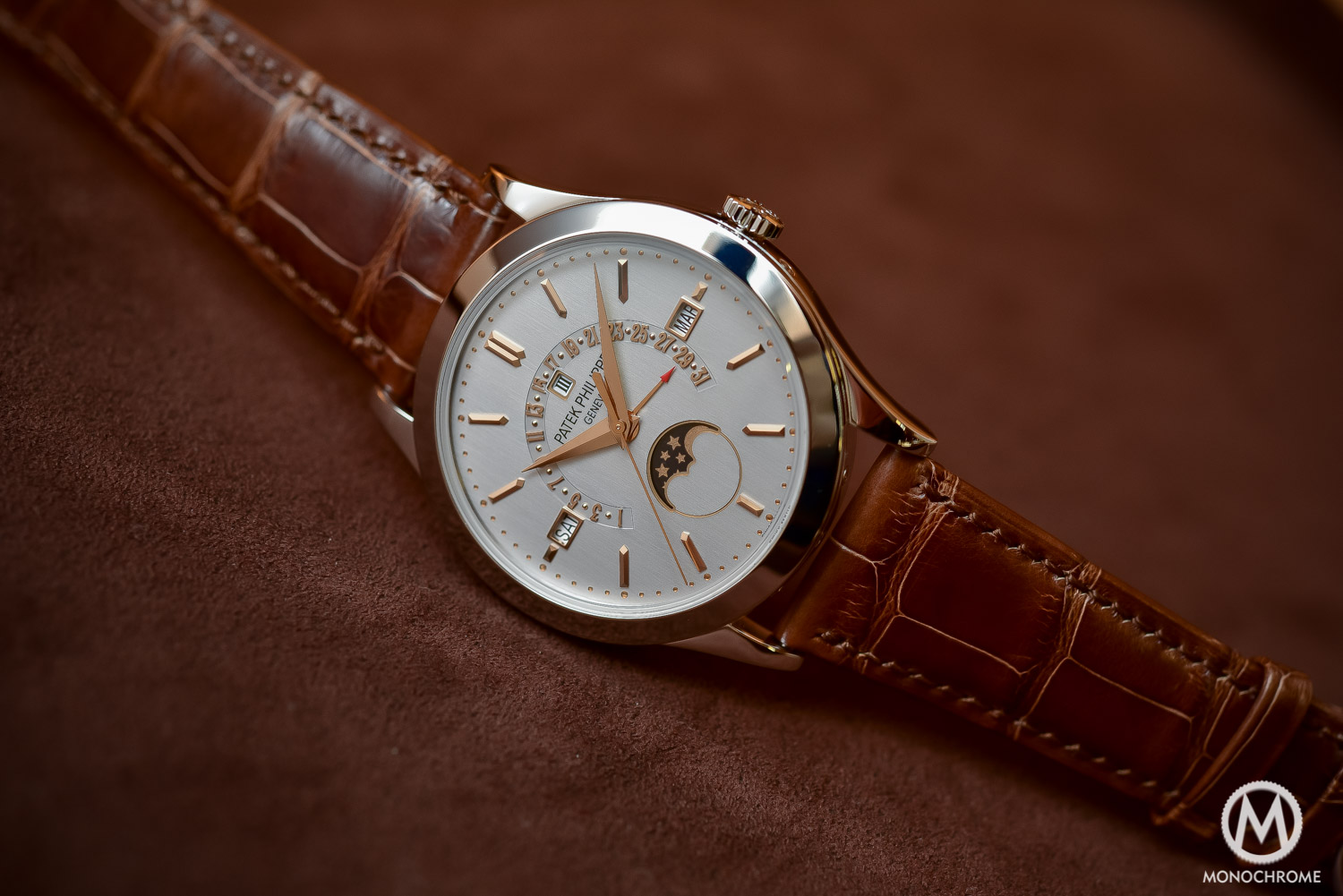You see, here at Monochrome-Watches, we always praise the complexity of movements, we always emphasize on the amount of work done by watchmakers to assemble complications or to achieve a perfectly polished bevel, to finish an internal angle or to obtain black polishing – we even did a technical guide about it. We also look at “métiers d’art” – engraving, enameling, micro-painting. However, there’s one thing we tend to neglect and that is actually much more important than we think: the dial. Yes, a dial can be very simple – most of them are actually painted plates with numerals and track printed. However, some dials can be proper demonstrations of art, showing microscopic elements finished with extreme care. People say that the devil is in the details… In the case of the Patek Philippe 5496P-015, the devil is clearly in the dial.
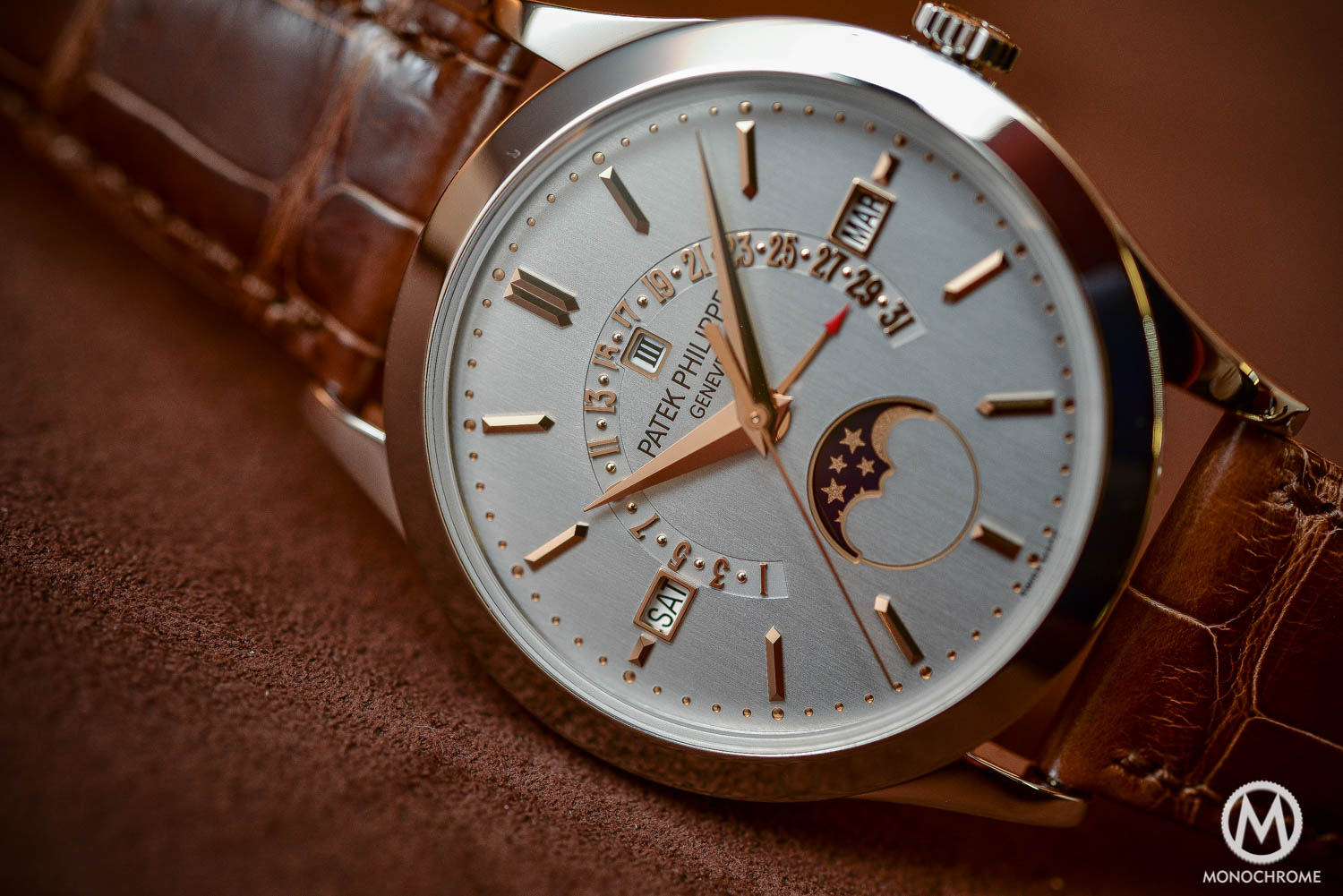
Why are we usually giving our interest mainly on movements? It is simple. The movement of a watch is the beating heart, it’s what makes a watch alive. It is also the place where a watchmaker can properly express his art, simply because a watchmaker, as good as he is, is nowadays not the one behind the design a watch – at least for larger brands. Few are the watchmakers who actually design both the movement, the case and the dial. That’s probably why we – and most watch journalists – always put movements on a pedestal. They are the main reason behind our passion.
Why looking at the dial, and only the dial, today? Well, the dial is certainly the most important part of a watch. Yes, I dare to write it. Why is it? Do you look at the movement to read the time? Do other people see the movement of your watch when you wear it? No. The first and main visible side of your watch (and in fact the one useful on a daily basis) is the dial, as it both indicates the time and give a clear indication of what is the watch in question – you usually look at the painting, not much the frame around it… To illustrate our words, we need a watch, one that actually stunned me when I saw it at Baselworld 2016, the Patek Philippe 5496P-015. I’ve been profoundly impressed by its dial – not that the rest of this watch is void of interest, but it is not entirely new, as already existing in other variations (see one example here). It was clearly the dial and the dial only for me.
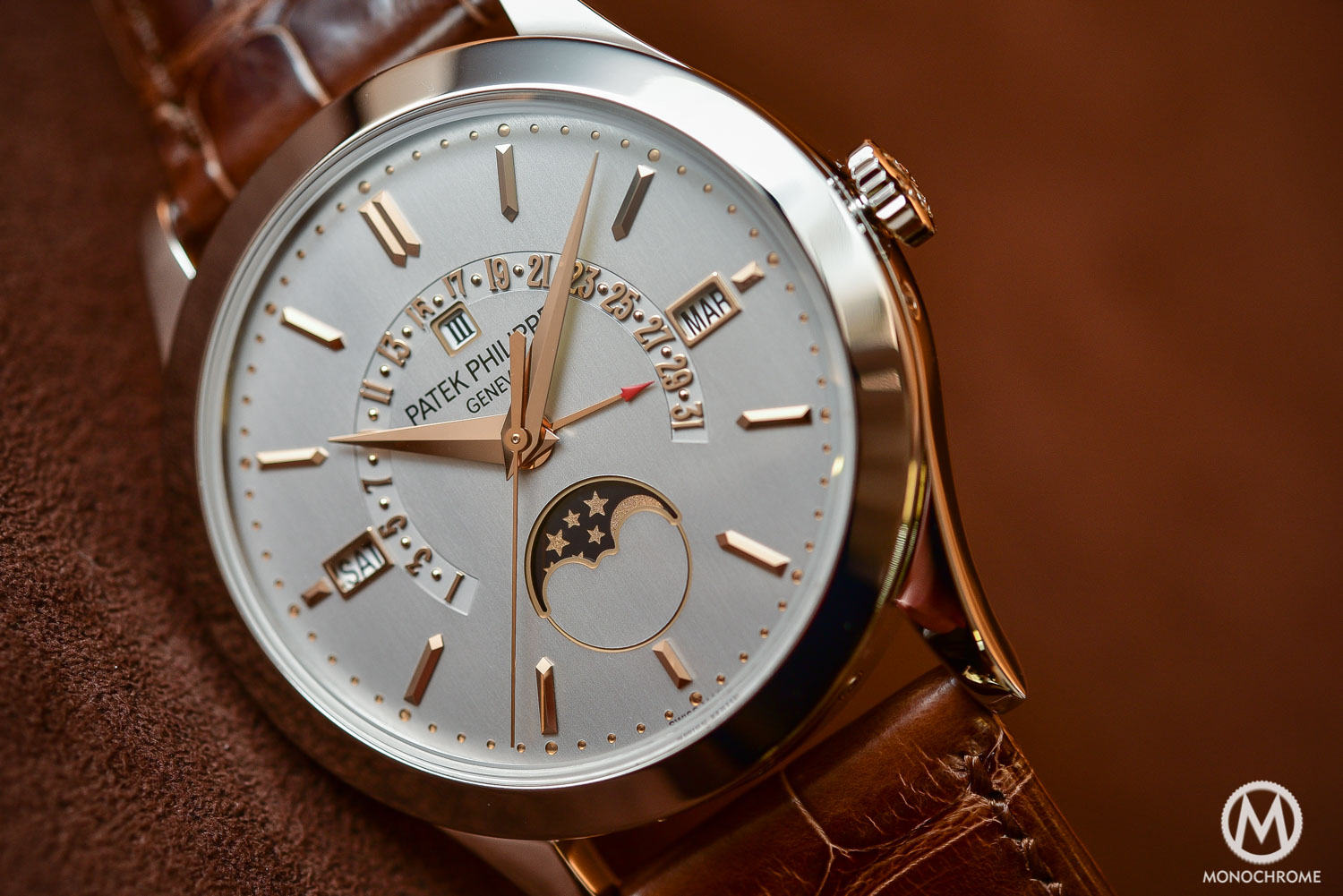
When you look at the dial of the Patek Philippe 5496P-015 with your eyes, you can see that it is impressive. In fact, I would almost say that it is too demonstrative, almost messy, too loaded. It’s true that there are multiple indications, some not especially balanced, and that there are numerous applied indexes or numerals. From the periphery to the center, there’s a minute track (with gold dots), hours indexes (applied, in gold), a moon-phase indications (enlightened with a gold circle), two windows for the day of the week and the month (circled with gold windows), a track for the date (with applied numerals), a window for the leap year (also circled with a gold window) and finally the Patek Philippe logo. That’s a lot of informations.
Things change when you look at it under the loupe (or here under the 60mm macro lens of my camera) and not on a human eye scale. Of course, this won’t change the busy dial but you’ll discover things from another angle. You actually figure out the amount of work and precision required to achieve such a dial. First of all, I’ve counted 67 parts for the dial only (that’s not an official number, just what I can count) – including the dial itself, the applied hour indexes, the QP window frames, the 4 hands, the moon disc, the discs for the indications of the QP and finally all the indexes (dots and numerals) of the date track. Now you start to understand where we want to go.
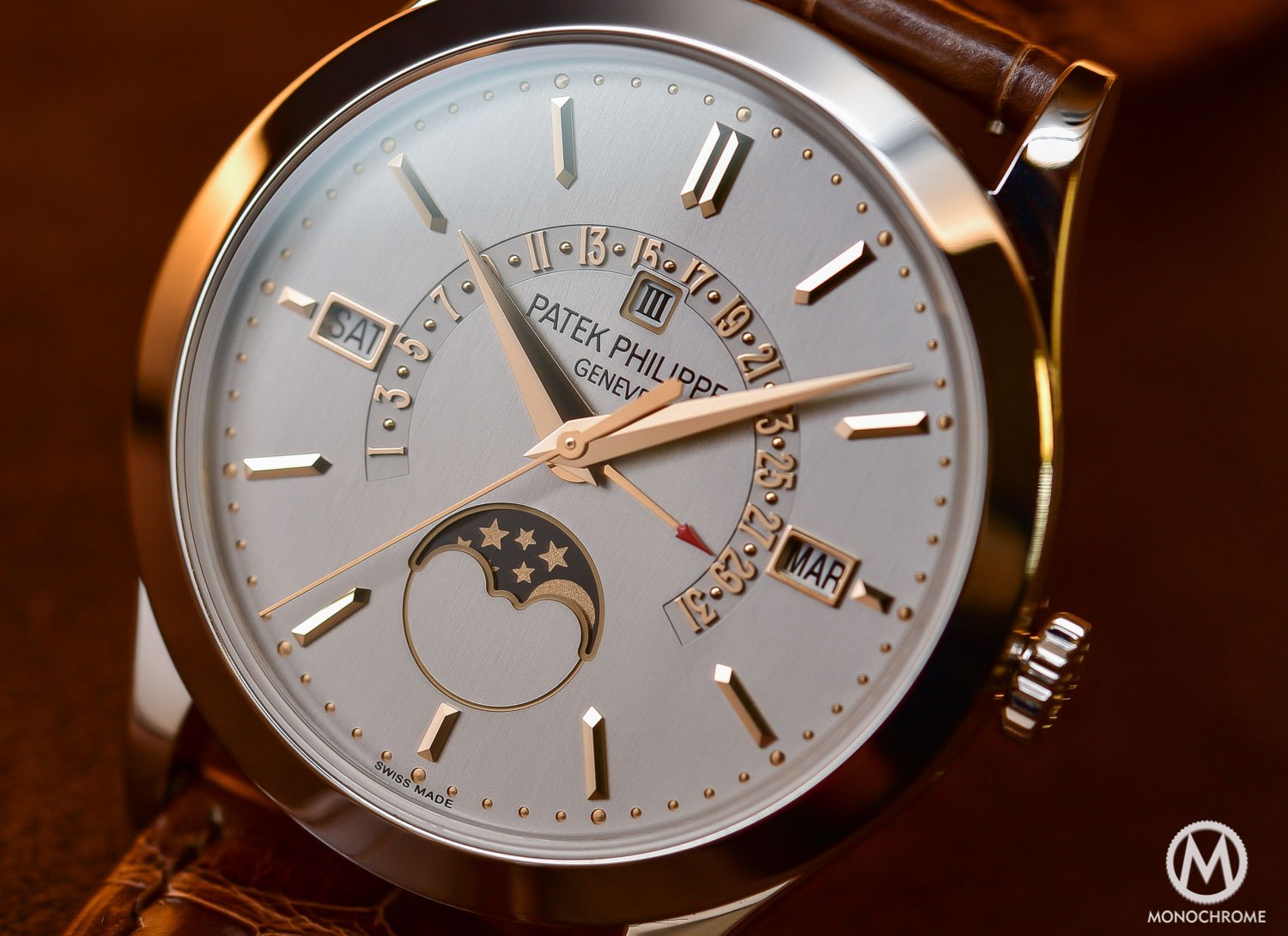
Then, we need to talk about steps to achieve such a dial. The dial is first cut from a brass plate. All the holes are cut – both for the windows and for the indexes pillars, but also for the small recessed dots of the minute track. This dial is then cleaned (to remove machining traces) and then brushed. It is then painted and all the dots of the minute track are filled with gold. The logo has to be printed too. That’s the easy part. Then, all the indexes have to be crafted, polished and finished by hand and then applied on the dial, by hand too, separately – and when you have 42 of them for the date track only, it is far from easy, believe us.
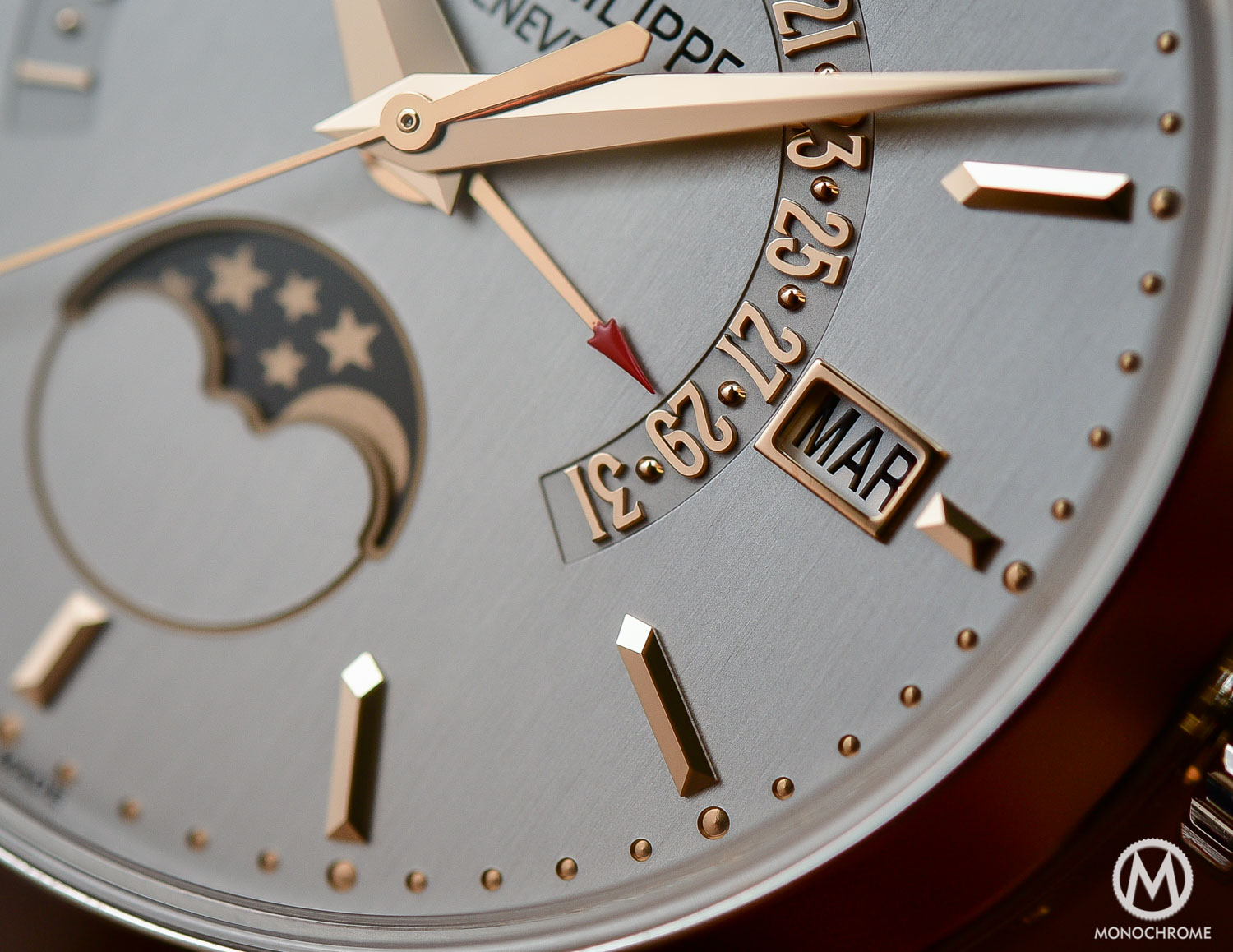
Then, you have to figure out these operations, but considering the size of these elements. Once you have the diameter of the watch, it is actually not that difficult to calculate the dimensions of other elements (I’ve done it myself, and no, I don’t have time to loose and my days are fully occupied…). Here are some examples (approximate dimensions):
- Indexes for the hours – batons
- length – 4mm
- width – 1mm
- Indexes for the date track – numerals
- length – 1.5mm
- width – 0.3mm
- Indexes for the date track – dots
- diameter – 0.5mm
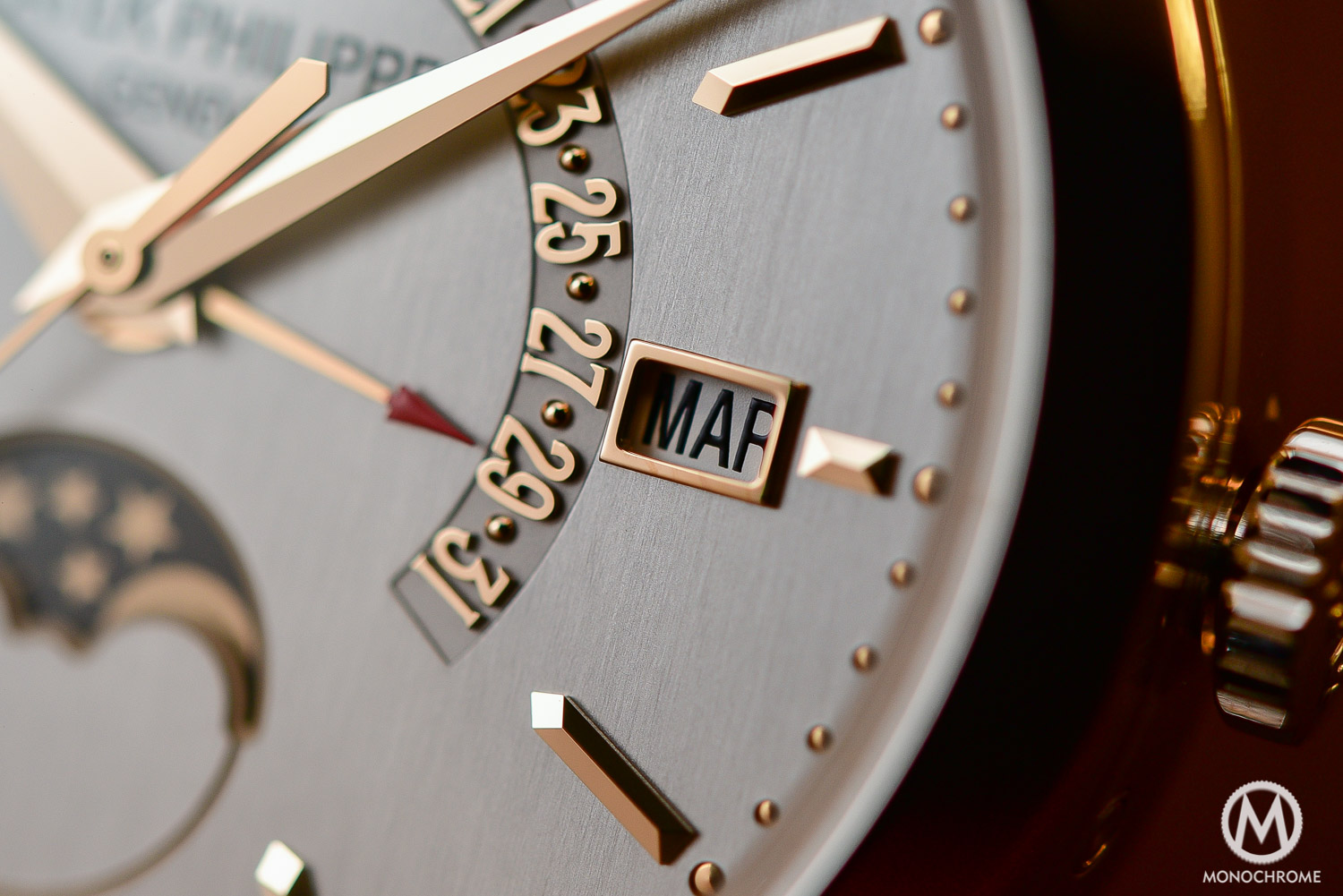
Now imagine you have a small dot or a small numeral, in solid gold, entirely polished (and that you must not scratch) in you hand and try to apply this on a dial… Take a ruler and figure out such a size and then imagine you have to apply 50+ elements like this on a dial. That’s what we call details. Once again, the question here is not about the watch itself, whether we like it or not. This part is about personal tastes. Such an article has one goal only: explaining you, dear readers, what is haute horlogerie, what are the steps required to achieve a watch and why some of them are so expensive. We hope that it will help some of you to put things into perspective and to understand why watchmaking can be called art (sometimes…).

